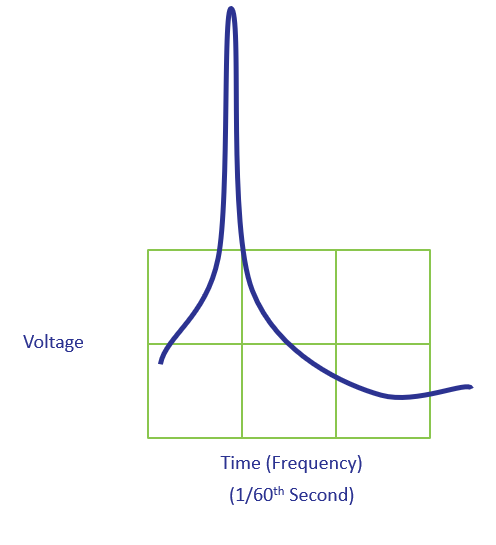Protecting Your Home and Business from Transient Surge Damage
The need for surge protection continues to increase as homes and businesses grow their dependence on technology for fun, entertainment and day-to-day operations. This article will help you understand how to select the right surge protector to help minimize future risk of damage to your home and business.
An electrical surge (also known as a transient surge) is a very brief but often intense spike in the voltage at the incoming power feed to a home or business. Smaller but still potentially damaging surges or spikes can also enter the building via telephone or coaxial cable lines.

Scientists and surge protection engineers have developed an isokeraunic (“ISO”) chart to measure the number of storm-related surges at different areas around the country. It counts the number of thunder days to identify areas that are most prone to surge damage.

The Southeast and Midwest areas of the country experience 30 to 60 thunder days per year. Florida leads the country with 80 to 100 thunder days, often making them the “Lightning Capital” of the Southeast! Regardless of where you live, it only takes one thunder storm to damage or destroy expensive appliances in a home.
Here’s How to Protect Your Home or Business
- Install a meter base surge protector directly behind the electric meter at your home or business. This special device captures and sends damaging surges to earth ground outside, before they can enter a home/business and cause damage. Many electric utilities have a program that offers this device for a small monthly fee.
- If you have a business or are unable to arrange for a meter base surge protector for your home, the next best option would be to secure the services of a licensed and qualified electrician to install a hard-wire surge protector at the main electrical feed.
- Sensitive electronics should be protected using a plug-in surge protector with built-in protection modules for cable (data) and telephone lines. When selecting a plug-in surge protector:
- *Match the dollar value of the plug-in surge protector with the dollar value of the device being protected.
Example: When protecting a microwave oven, spend $20 on the surge protector. When protecting a 70 inch big screen, spend $100 on the surge protector.- *In addition to choosing the appropriate plug-in surge protector, strongly consider a battery back-up for your largest “big screen” smart TVs? Why? Because smart TVs are actually computers and like a computer, they don’t like momentary power interruptions (blinks). As a rule of thumb, if you paid over $1200 for the TV, strongly consider both a high-quality plug-in plus a battery back-up.
Where to Purchase Surge Protectors
We have several hardwired and plug-in options that can be found on our products page (https://www.kenick.com/products.php). Just give us a ring to place an order 800-362-9997.
By protecting your home at the incoming electrical power feed and your high value appliances and sensitive electronics with a carefully selected plug-in surge protector, you will virtually eliminate (other than a direct strike to your home/business) opportunities for transient surges to cause damage.

